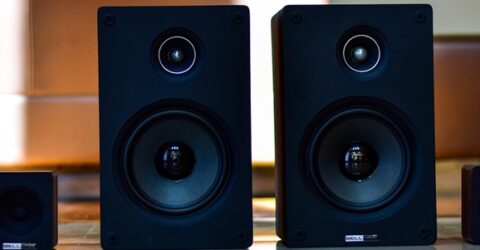A beginner’s guide to speakers
Our beginner's guide to speakers explains why these often unheralded devices can transform your gaming, streaming and working life

Few pieces of modern electronic equipment are as understated and undervalued as speakers.
We pore over screen specifications when buying TVs, yet we rarely consider sound quality.
Equally, we spend large sums of money on smartphones, without even thinking about how they’ll sound.
Streaming platforms offer their customers multiple tiers of picture quality, but there’s a general assumption that basic stereo broadcasts will be sufficient.
Indeed, few consumers could identify the difference between lossy and lossless music files, Dolby 5.1 and 7.1, woofers and tweeters…
To counteract this widespread indifference towards fifty per cent of the audiovisual equation, we’ve compiled a brief beginner’s guide to speakers, explaining key things you need to know.
At the same time, we’ve avoided delving into technicalities like harmonic distortion or impedance, since few of us are innate audiophiles.
Thinking smart
Even though the majority of UK households contain at least one smart speaker, few people care about the speaker’s composition, quality or maximum volume.
To be fair, Amazon’s Alexa products – easily the most popular smart speakers in the UK – tend to emit punchy sound across a reasonable frequency range.
This is the first consideration in any beginner’s guide to speakers.
Can a speaker handle low-end bass frequencies as well as the mid-range and high-end sounds which, in a multi-speaker setup, would be handled by drivers and tweeters respectively?
Premium cars often have a blend of speakers focusing on specific frequencies – including a boot-mounted bass subwoofer.
At home, this tends to be the preserve of surround sound systems, which are great for Dolby DVDs but overkill when streaming iPlayer content.
Even premium speakers will sound mediocre if you’re watching a standard definition TV show or playing a compressed AAC audio file.
Music aficionados favour lossless audio, which has far less compression. Music sounds richer, but individual files are much bigger than a 320Kbps MP3.
Say watt again
Wattage is the measure of sound output commonly used to highlight speaker power, though precise definitions vary depending on whether or not an amplifier is involved.
Loudness (measured in decibels) should never be conflated with sound quality, but it is a useful benchmark.
For a home entertainment setup, output between 15 and 30 watts ought to be sufficient, providing freestanding speakers are positioned a few feet apart and facing you.
On laptops, tablets and smartphones, you’ll be lucky to get a couple of watts from built-in
speakers. That’s why sound output is often not quoted (or buried alive in spec sheets).
The best advice in terms of gauging speaker quality is to play a familiar song and study whether every part of the track is reproduced cleanly.
You don’t need graphs or a music degree to instinctively tell whether a favourite piece of music sounds tinny, muffled, distorted or flat.
Bluetooth speakers cost-effectively bypass feeble integrated speakers, while desktop computers and docking stations can output device audio to bookshelf speakers.
Soundbars do a similar job for TV sets, and more easily than cinema-style 7.1-channel surround systems, though there is a risk sound and picture won’t be fully synchronised.
Avoid devices (particularly portable speakers) advertised with ‘intense’ bass, since this may drown out higher frequencies and spoil the auditory experience.
Finally, consider the environment speakers will be occupying.
Wooden or laminate floors can make even rich sounds feel echoey, so add rugs and other soft fabrics wherever possible.
Small rooms require less output to achieve immersive audio, and powerful floor-standing speakers may disturb neighbours or other household occupants, even through floors or walls.






